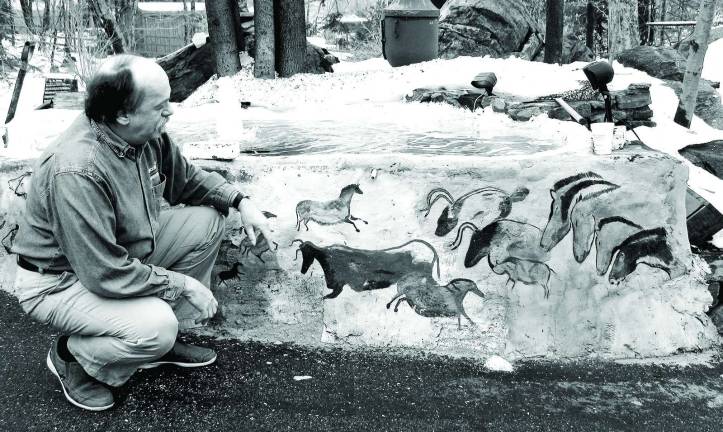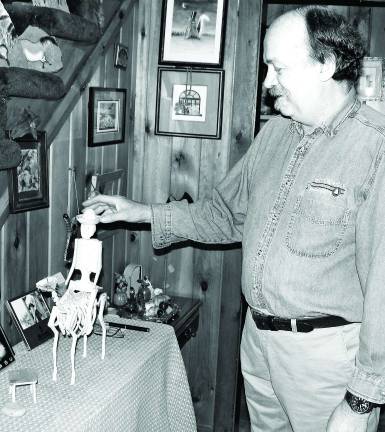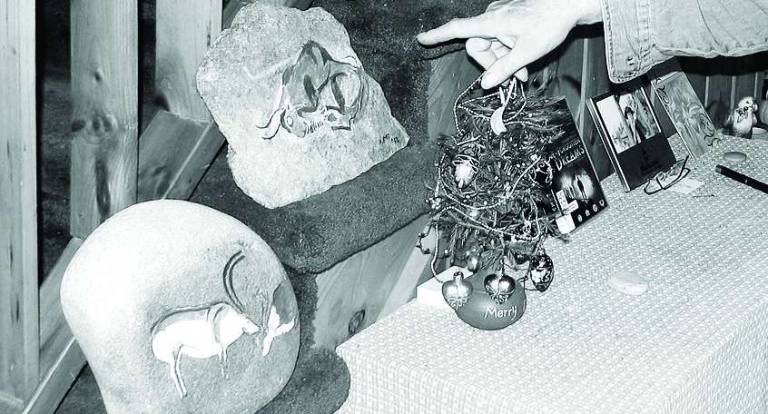Local artist recreates images of ancient cave paintings



HEWITT — Retired mechanical designer Michael Byro is a self-taught artist in multiple media including painting, sculpture and even baking. He recently won first place in the nearby Village of Warwick’s Gingerbread Contest.
However, Byro’s most recent passion is cave art. And his front yard now serves as a mini-tour of Paleolithic cave paintings from the Lascaux and Chauvet caves in Southwestern France to the Cave of Altamira in Spain.
The images that Byro has reproduced on the boulders sitting on his property are an eclectic selection from each of the caves.
The actual caves are enormous and their scale and size prevented Byro from reproducing a replica of a particular cave with its paintings. But he was able to do the research and reproduce individual paintings from the major caves.
Byro first became interested in cave paintings last June when he came across a book on cave paintings in a public library.
He pursued the subject with other books and on the Internet, where he visited French and Spanish government sites.
The majority of the artwork he discovered depicts southern France and Spain as thriving with bison, rhinos, panthers, lions and other animal and bird species that today, we would only associate with Africa.
“My interest in cave art,” he said, “made me want to copy some of the images in order to show the public the beauty of these ancient paintings. I'm in love with it.”
Byro, who lives with his wife, Laurie, in Hewitt, viewed and highly recommends a documentary on Chauvet-Pont-d’ Arc Cave in the Ardeche department of Southern France. The cave, only discovered in 1994, contains some of the earliest known cave paintings, as well as other evidence of upper Paleolithic life.
“According to radiocarbon dating,” said Byro, “those paintings at Chauvet may be 35,000 years old. Those artists, who were Homo Sapiens, were communicating with us.”
The ancient artists used organic pigments including charcoal, ochre and iron oxides to paint what they saw. And their paintings, deep in the back of climate stable caves, were unaffected by the elements to this day. The governments even restrict visits to preserve them from any possible contamination by human beings.
Byro, however, did not have that luxury so he recreated his drawings by using acrylic paints coated with polyurethane. And even then, the weather can take its toll.
In addition to the 16 outdoor drawings, Byro has also painted 14 cave art images displayed inside the log house he and his wife built by hand.
Besides his cave art, Byro has also taken an interest in reproducing the skeletons and skulls of Mexican folk art popular in the Mexican state of Oaxaca.
“It beats watching TV,” he said.